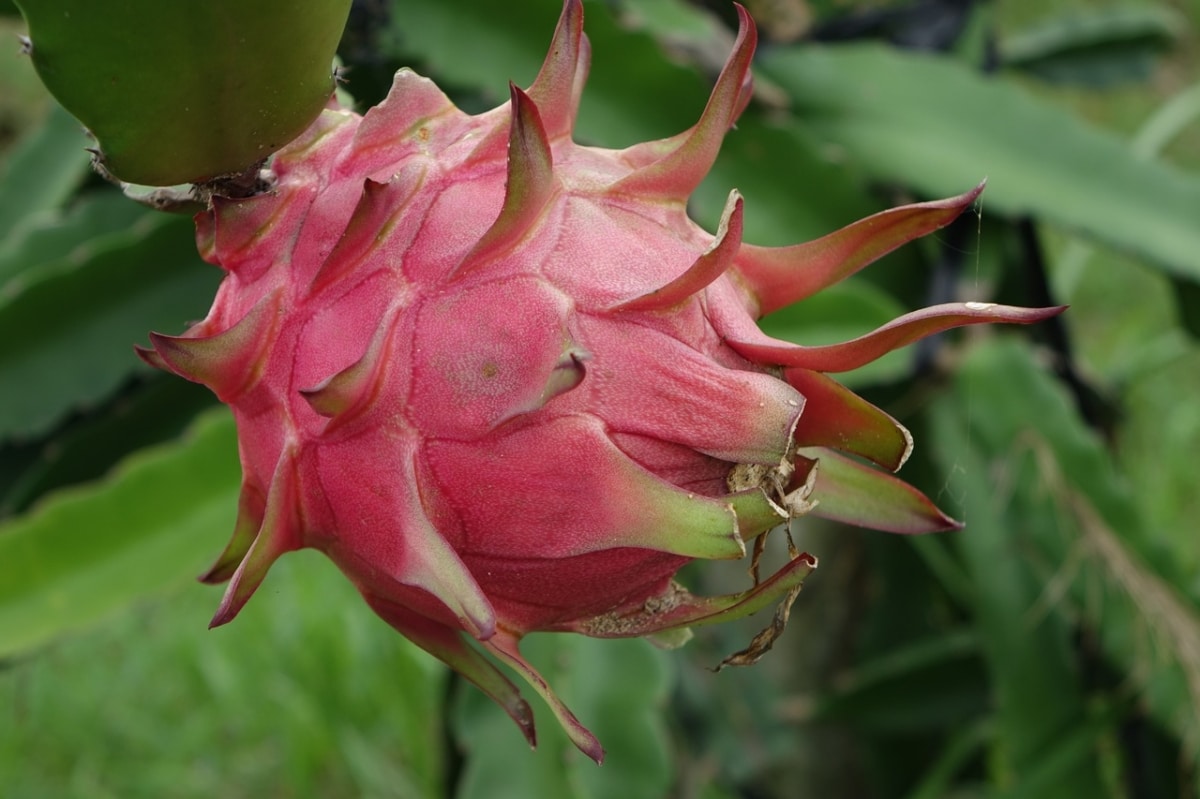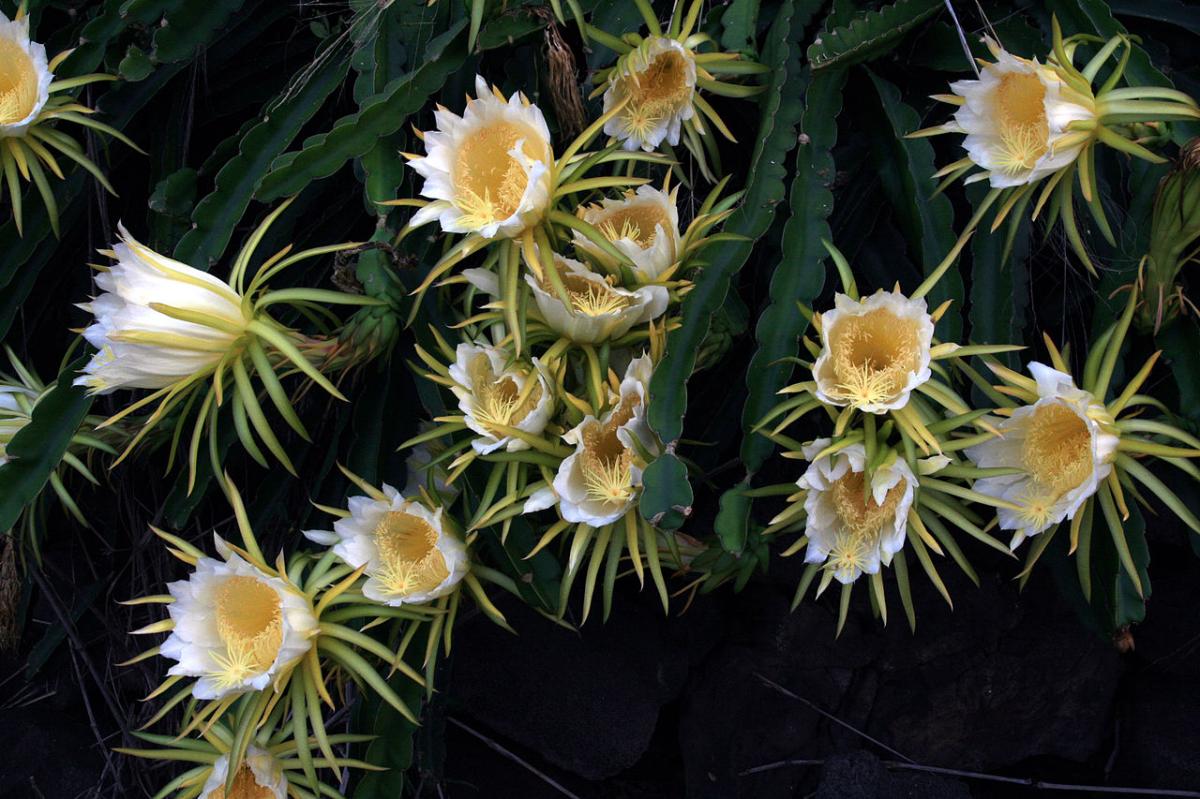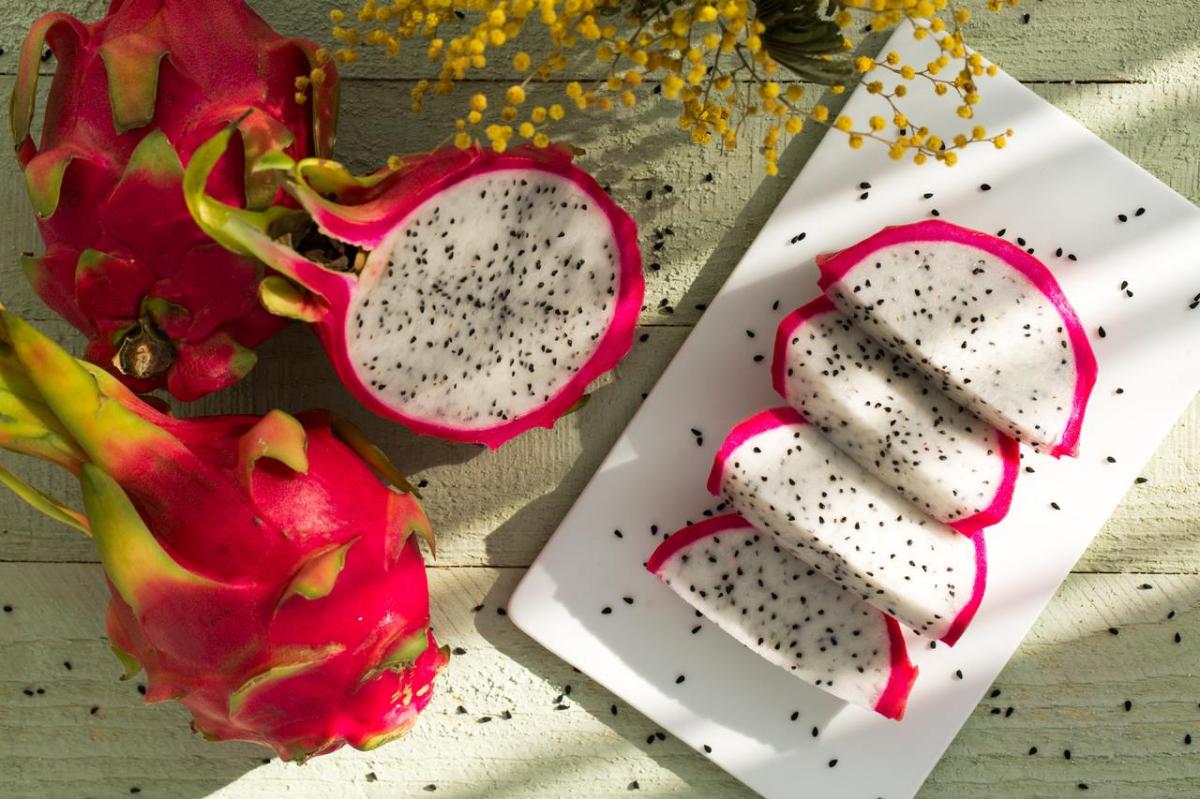
La pitahaya it is one of the most cultivated epiphytic cacti; not in vain does it produce an exquisite fruit every summer. Although it is not very suitable to have it in a pot since its size can be very large, it is interesting to plant it in the garden, even if there is not much space available.
Yes, to get a good harvest it is necessary to know the needs of water and nutrients of the Hylocereus undatus.
Origin and characteristics of the pitahaya

Image - Wikimedia / Brocken Inaglory.
The pitahaya is an epiphytic cactus that can grow on something that serves as a support, such as the trunk of a tree for example, or by crawling on the ground. It is native to Central America, and today it is cultivated in virtually all warm-climate regions of the world. It reaches up to 10 meters in height whenever it can climb, although in a garden or orchard the normal thing is that it is not allowed to exceed 3-4 meters to be able to collect all its fruits without problem.
Its stems are succulent, green, and can measure up to 5 meters in length. They have areoles from which sprout 1 to 3 very short brown or blackish spines, usually about 4 millimeters. The flowers are white with green tepals, 30 centimeters long and fragrant.. These open at night and close the next morning. If they manage to pollinate, for which they need to receive pollen from another plant, the fruit will begin to ripen.
Once it does, it will be a berry 6 to 12 centimeters in diameter with a red to yellow rind, and the pulp will be transparent. The seeds that it will have inside will be black, small but very numerous.
Caring for the Hylocereus undatus
El Hylocereus undatus It is a plant that can be kept alive for a long time if it is cared for in the following way:
Location
It is a plant that has to be placed in a sunny area. It needs a lot of light to grow and flourish, so we don't have to be afraid to expose it to the star king from a young age.
Of course, and as we always say, if we have bought our pitahaya in a nursery where they had it sheltered, when we get home we must put it in semi-shade, not in the sun because otherwise the next morning we would see that it has burns.
Earth
- Flower pot: it is highly recommended to fill it with a substrate that drains the water well. An interesting mix is the following: 50% black peat + 50% perlite (for sale here).
- Garden: the earth must have a correct drainage so that the roots of the pitahaya do not rot. For this reason, it will grow well in sandy soils, which absorb and filter water quickly.
Irrigation

Image - Wikimedia / Prenn
During the summer, as the temperatures are high and it can rain little or nothing, it is important to water it once or twice a week. In winter, on the other hand, as the climate will be different, colder and perhaps more humid, the plant will go to rest and its water needs will decrease, so that we will only water approximately once a month.
Whenever possible, rainwater should be used, since it is the best that the plants can receive, regardless of what it is. Now, you should know that any soft water that has little lime will also work for you.
Subscriber
El Hylocereus undatus It must be paid to achieve a higher yield of the plant, but also so that it is healthy in spring and until the end of summer. As we know, its fruits are suitable for consumption, so we recommend using fertilizers authorized for organic farming, such as guano (for sale here) or worm castings. If we make compost to fertilize our crops, we can also pour the pitahaya around the trunk and mix it with the earth.
Multiplication
It is a cactus that multiplies by seeds and cuttings, from spring to early summer.
- Seeds: they must be sown in pots with cactus soil, keeping them separated from each other and covering them only with a little substrate.
- Cuttings: They are made by cutting stems and planting them in individual pots with vermiculite for example. Then water and put them in semi-shade.
Transplant
If it is being grown in a potWe will have to plant it in another larger one more or less every 2 or 3 years, the most suitable time being spring. This container has to be about 7-10 centimeters wider and taller than the previous one, since it is a cactus that, in addition to being large, grows quite fast. In addition, it must have holes in the base, otherwise the roots will rot as the water accumulates inside the pot.
In case we want to plant it in the gardenIt will also be done in spring. If we have more than one specimen, we have to keep them more or less one meter apart, so that they have enough space to grow.
Rusticity
The pitahaya is a plant that resists weak frosts, up to -1, maybe -2º if it is protected and punctual.
What are the benefits of pitahaya?
The fruit of the Hylocereus undatus it is edible, and it has numerous health benefits. In fact, it is antioxidant, digestive, improves cardiovascular system thanks to its high content of essential fatty acids such as omega-3, it is diuretic, and helps fight anemia.
How do you eat pitahaya?

You can consume it raw, for example in ice creams or salads. Other desserts, such as cakes or yogurts, are also prepared with it. You simply have to cut it in half and with a spoon extract the pulp.
What did you think of the Hylocereus undatus?